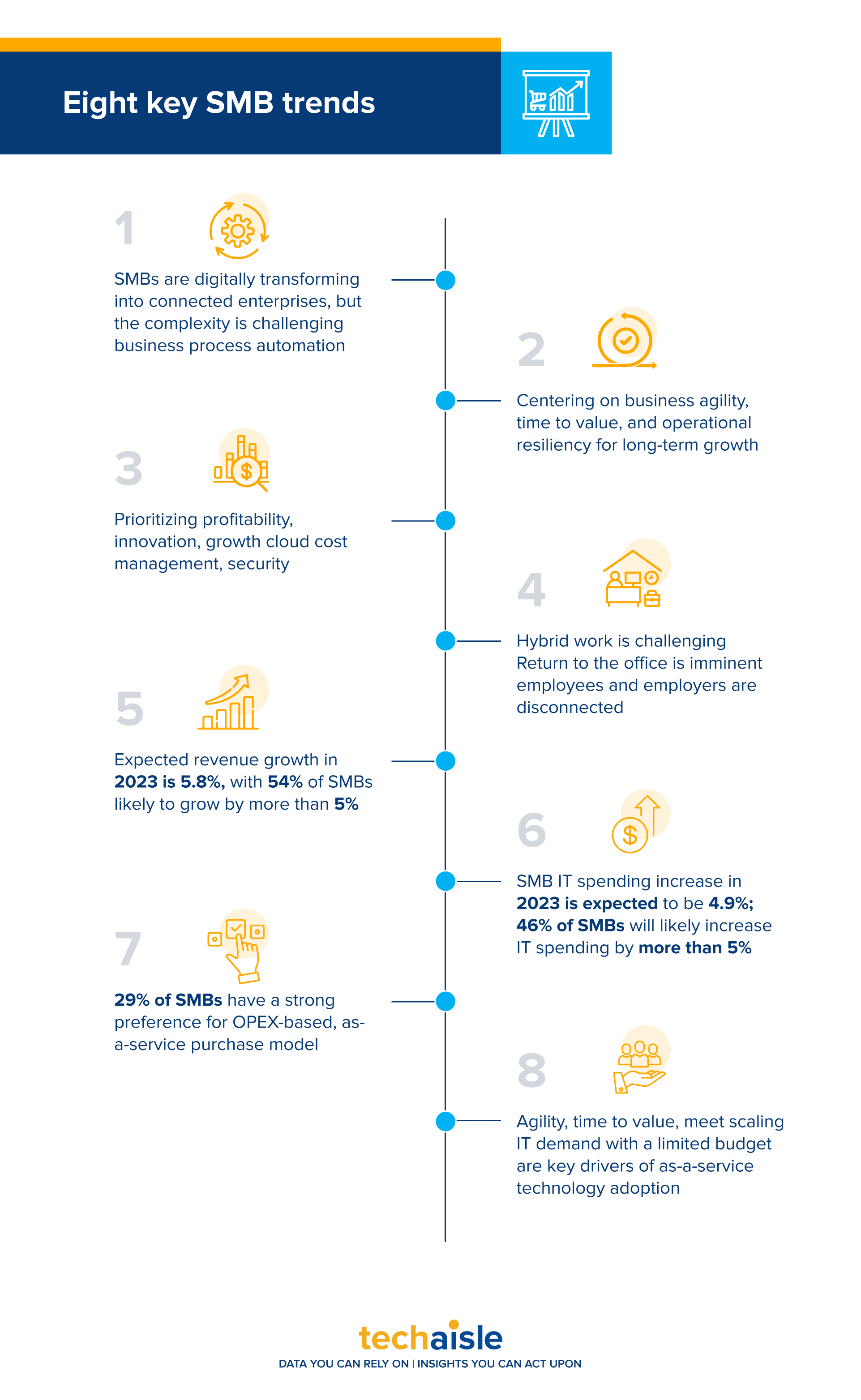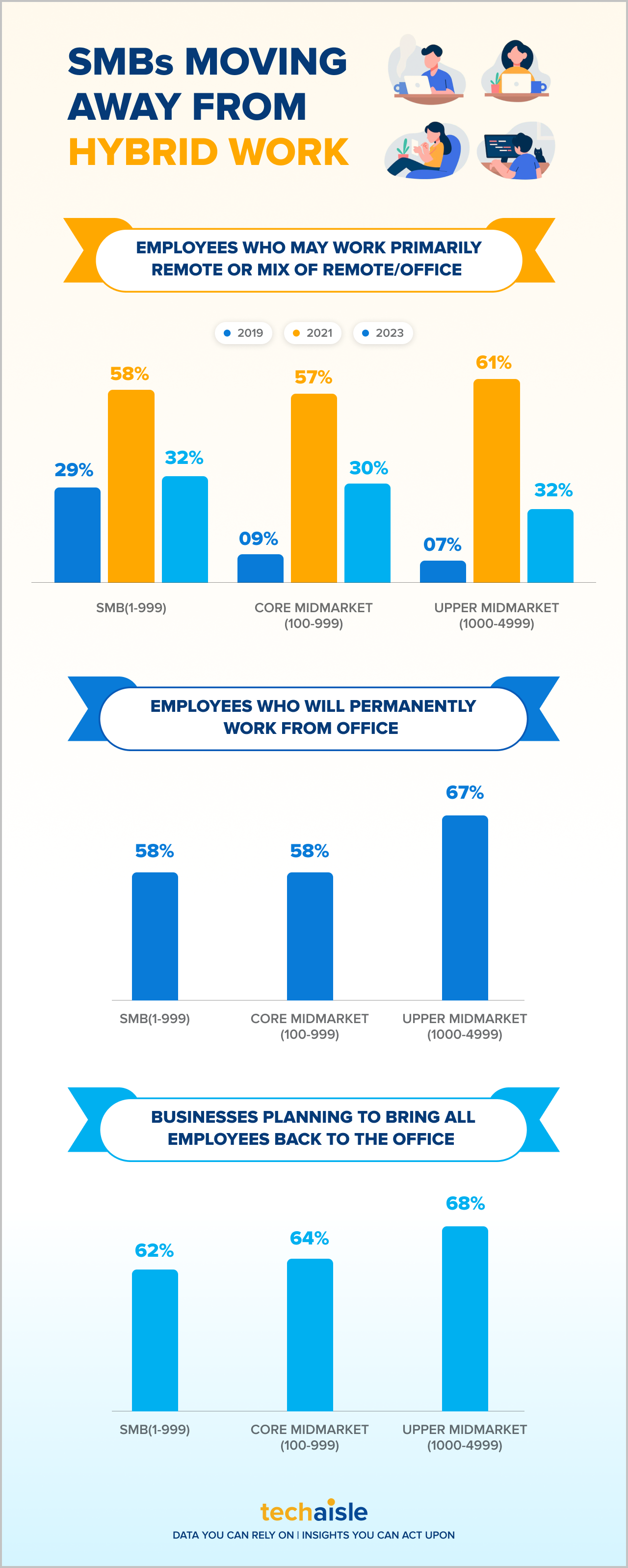97% of SMBs and midmarket firms consider technology important and integral to business success. As we enter 2023, IT product and service suppliers are looking to create a context for understanding the range of outcomes that the new year may bring. Techaisle has launched its "2023 in Focus" research series to support that effort, which illuminates issues and requirements in the vast SMB, core-midmarket, and upper-midmarket segments. After surveying thousands of SMBs and midmarket firms and having hundreds of depth calls, we see key trends that revolve around:
- Enabling a connected business and business process automation
- Converging on long-term growth, profitability, and innovation
- Prioritizing cloud cost management and security
- Hybrid work but challenges are overwhelming
- Sharpening focus on IT spend for time to value, agility
- As-a-service technology acquisition gaining momentum













